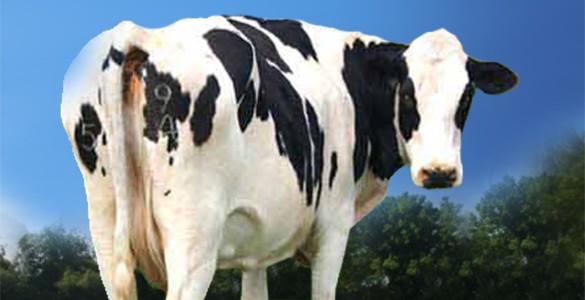Back in 2014, a campaign called “Ban Bossy”—championed by Sheryl Sandberg of Facebook and Anna Maria Chávez of the Girl Scouts—was launched to encourage young girls to embrace leadership without the stigma of being labeled “bossy.” The idea was simple: the word bossy discourages ambition. But the backlash was swift.
Some critics saw the campaign as itself a little… bossy. The New Yorker’s Margaret Talbot even wrote that banning words can be problematic, noting:
“The campaign to stop calling girls bossy is itself kind of bossy.”
Others, like columnist Carol McGiffin, asked why the word bossy was suddenly off-limits. She posed a pointed question: “Aren’t they just bossing us around by telling us we can’t use the word bossy?”
That stuck with me.
Because for all its noble intentions, the campaign never sat quite right. And it had nothing to do with politics or feminism. It had to do with Bossy the cow.
Let Me Explain
Growing up on a farm in Wisconsin, “Bossy” wasn’t an insult. It was a name—the name—for a cow. In fact, a lot of cows. My grandfather called every single one of them Bossy at some point. “Go on, Bossy,” he’d say, nudging one toward the barn.
The name goes back even further. Bos, the Latin word for cow or ox, gave us “Bossy.” At some point, the term wandered from the pasture to the playground. By the 20th century, it had become shorthand for someone—usually a girl—who tells others what to do.
Even Sesame Street had a character named Bossy the Cow, who wasn’t rude or commanding—just a cow with a name.
But words change meanings. That’s how language works.
The Restaurant Story
Some years ago, I was at a popular Italian restaurant in Schaumburg, Illinois. A group of people at a nearby table—clearly celebrating something—were trying to get the waiter’s attention. He was running, literally, back and forth between tables. I watched him wipe his brow. He was trying.
Then it happened.
A woman clapped her hands—loudly—to get him over. The kind of clap that breaks the sound barrier.
That wasn’t bossy. That was something else. Assertiveness turned rude. A gesture that communicated power, not leadership.
When he finally reached our table, I told him he was doing a great job. And I told the manager, too.
I didn’t do that to be kind. I did it because I’ve been in his shoes.
What Should We Do About “Bossy”?
The truth is, “bossy” was never really the problem. It’s a placeholder. A mirror. A word that reflects something we either admire—or fear.
And like all words, its meaning depends on tone, context, and the relationship between the people using it. That’s why campaigns like “Ban Bossy” fade: they target the symptom, not the cause.
If we want to encourage leadership in young people—girls and boys alike—we should focus on what leadership looks like: empathy, listening, accountability, and resilience. That doesn’t always mean being liked. But it also shouldn’t mean being labeled.
Interestingly, a recent report from the Center for Creative Leadership found that women are still more likely to be called “bossy” or “abrasive” than men in similar roles. Which means we’re not done talking about this—not by a long shot. They have a white paper as well.
So, what should we do?
We keep the conversation going. We teach the difference between being in charge and being in control. We praise assertiveness when it’s earned, and we critique tone when it’s harmful.
But we don’t need to ban words. We need to understand them.
Especially when, once upon a time, Bossy was just a cow.
What are your thoughts? I’d love to hear them. Feel free to reach out at 847-358-4848 or leave a note on our website. This post was originally written in 2014. Refreshed for 2025.
